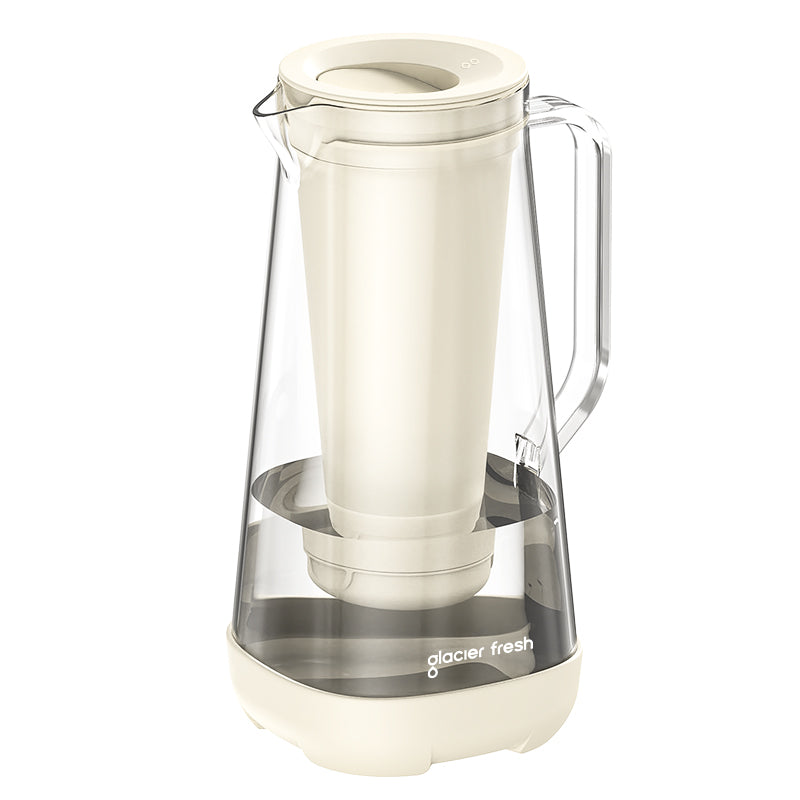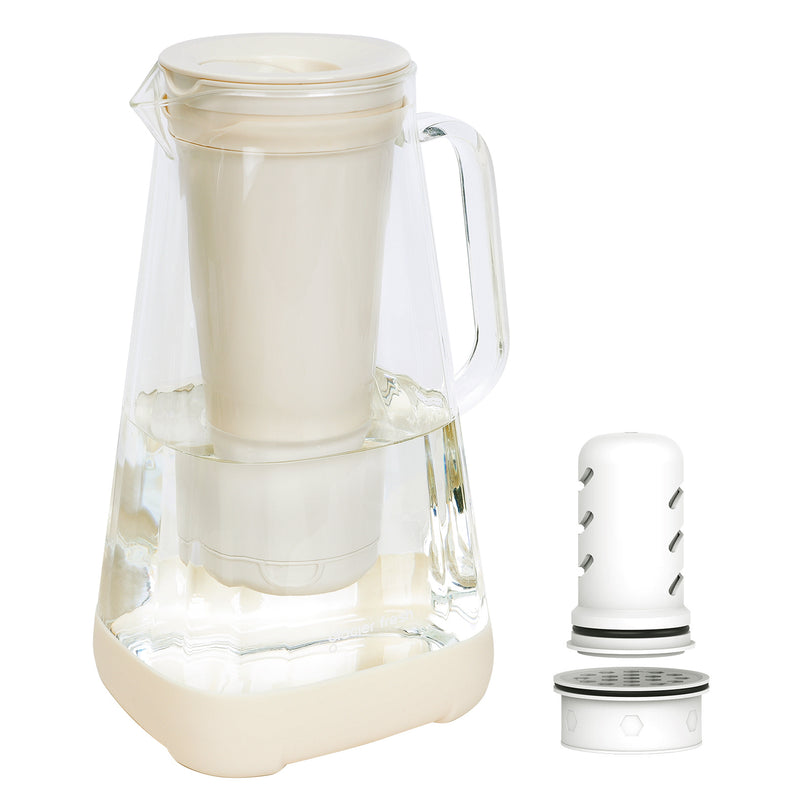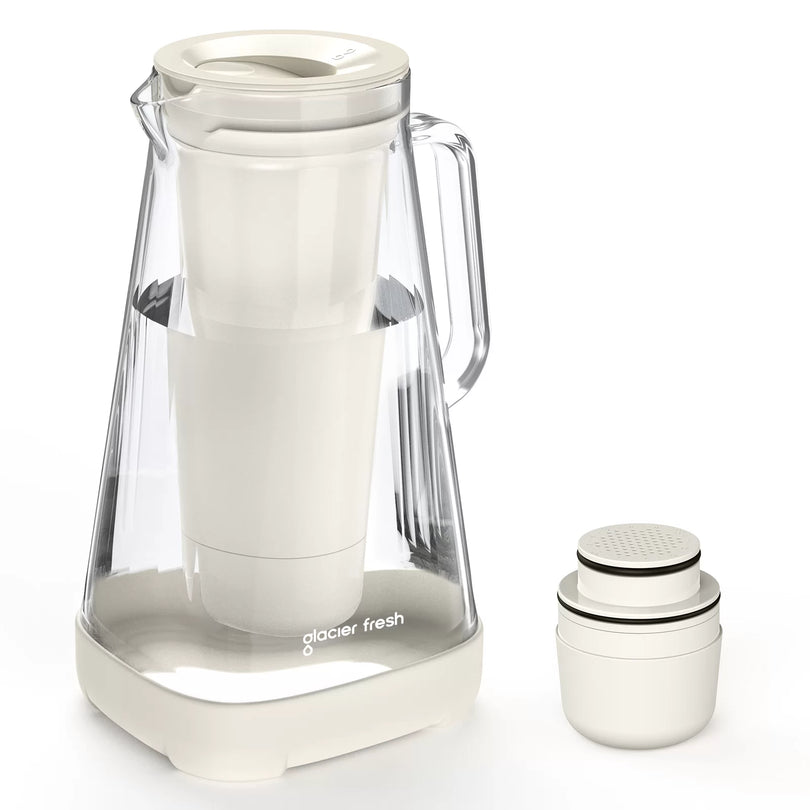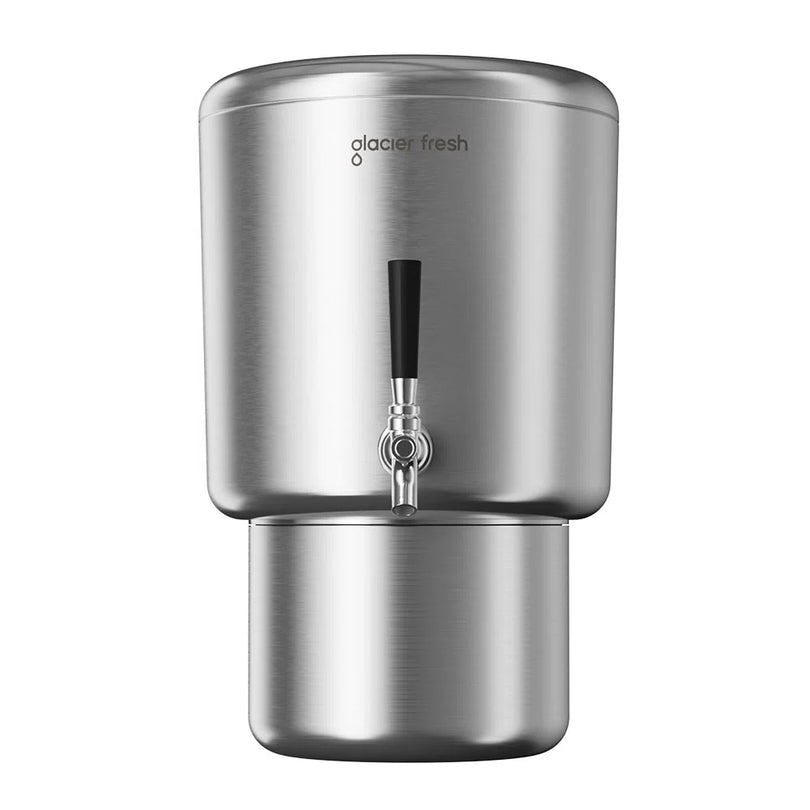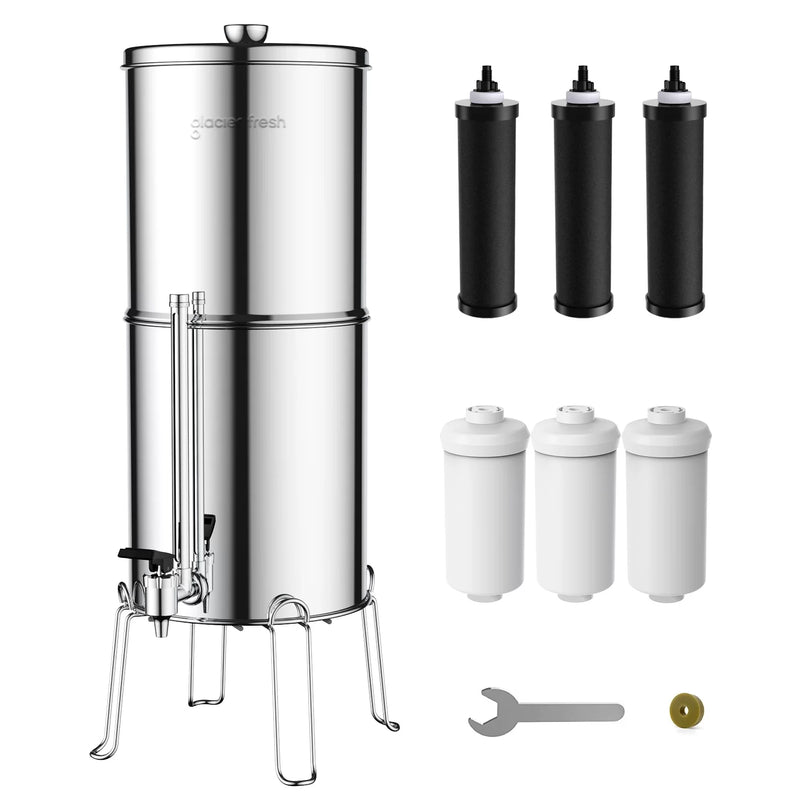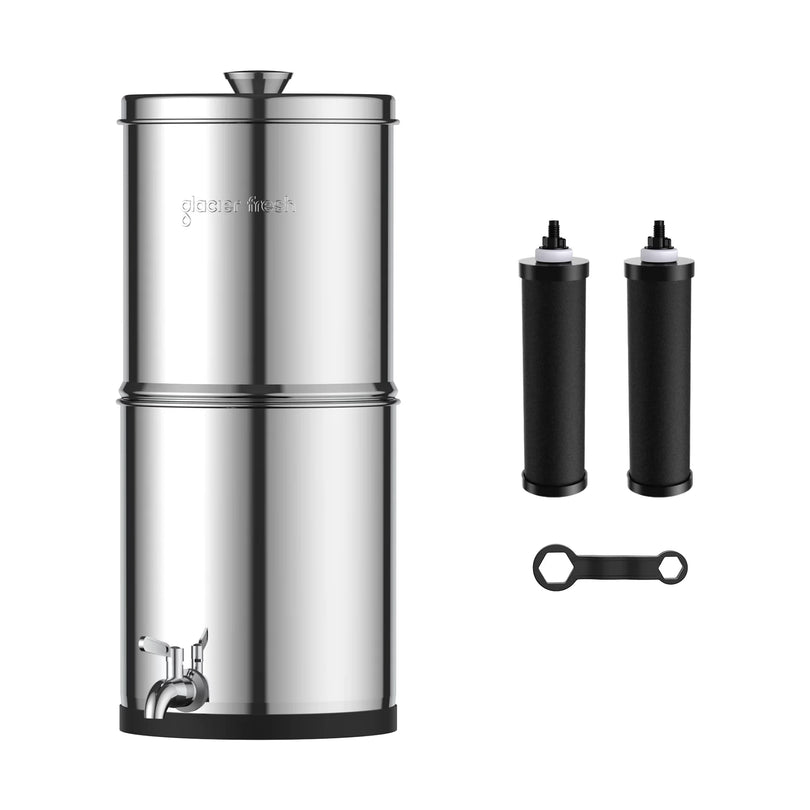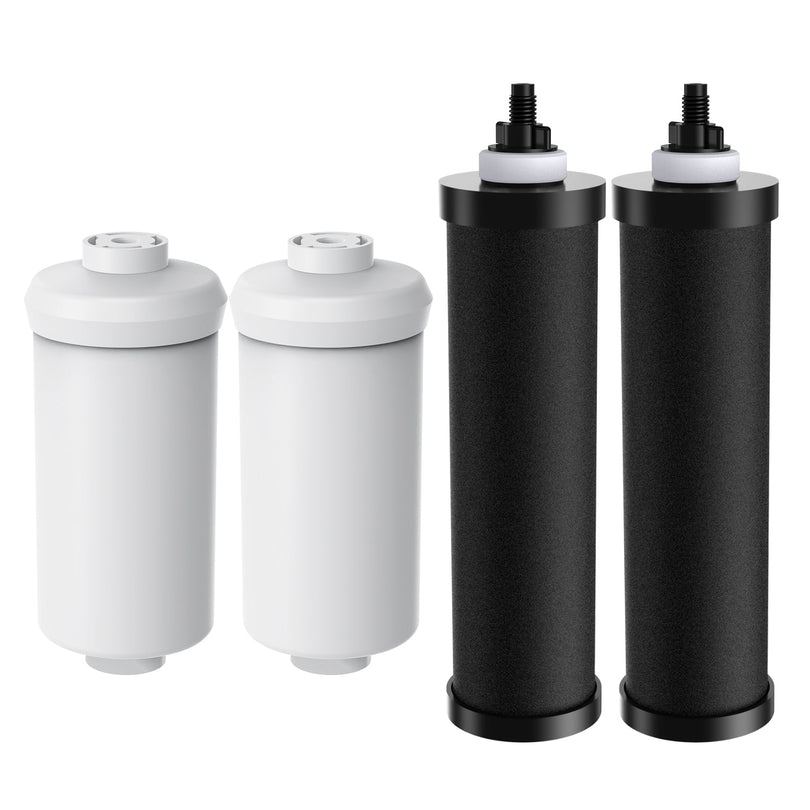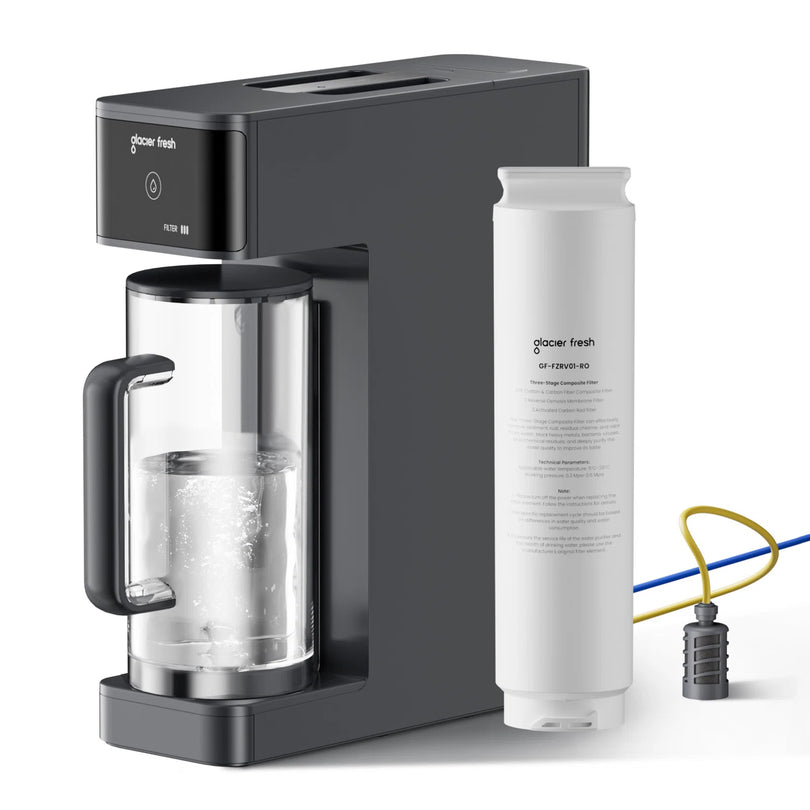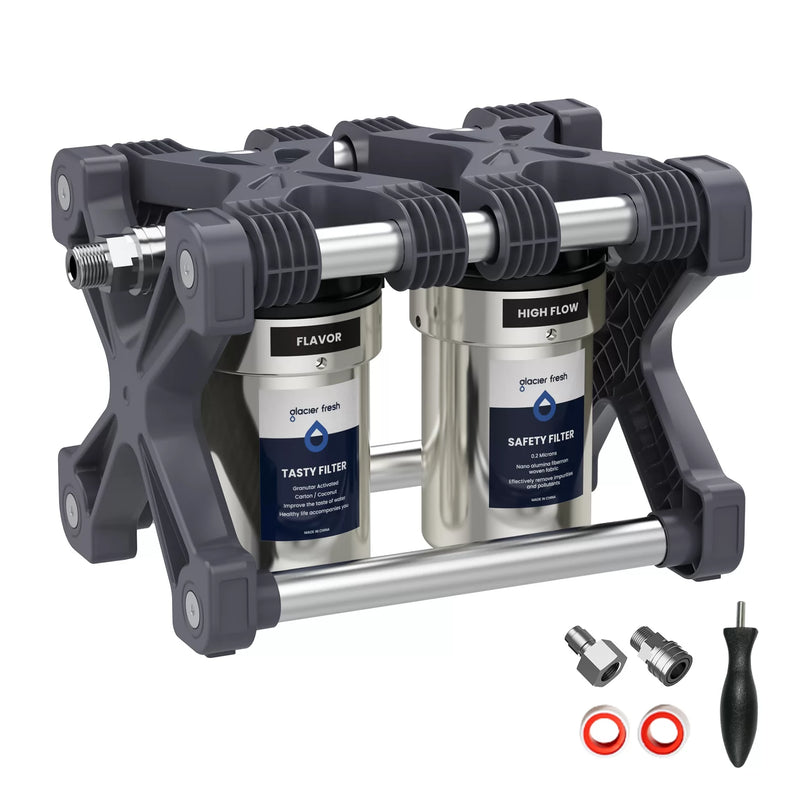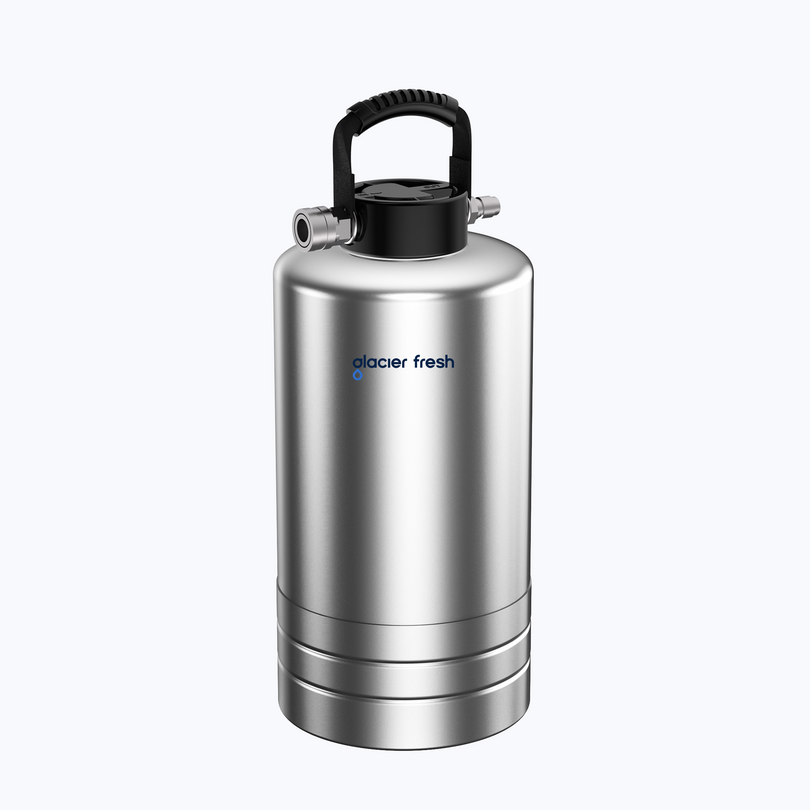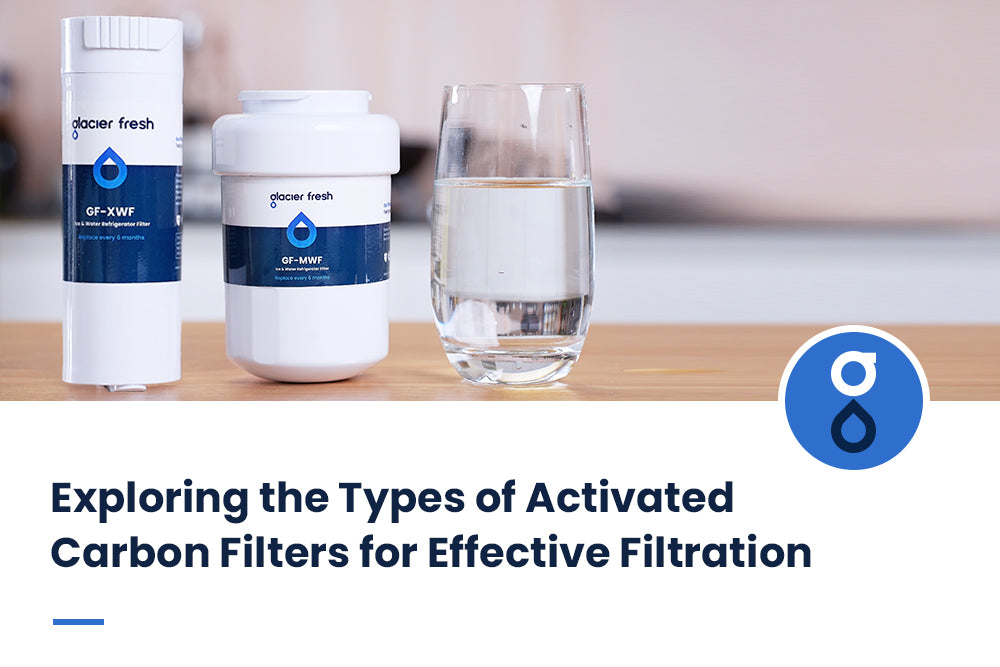Table of Contents:
What is activated carbon
How does activated carbon work
Benefits of using an activated carbon filter
Types of activated carbon filters
Important considerations when choosing an activated carbon filter
Glacier Fresh activated carbon water filter
FAQs
Conclusion
Activated carbon filters are essential for purifying water, and understanding the different types is critical for making the best choice. The adage goes, "An ounce of prevention is worth a pound of cure." And when it comes to choosing the right activated carbon filter, it's essential to do your research. Activated carbon filters use a physical filtration process to remove contaminants from water, allowing you to enjoy pure, clean drinking water. This article discusses the advantages of using an activated carbon filter and the different types available to make the best choice for your home.
What is activated carbon?
You may be familiar with activated carbon filters, but do you know what they are? Activated carbon filters are made from activated carbon, a form of carbon processed to create a material with a high degree of porosity. This porosity makes activated carbon highly effective for water adsorption and particle removal, as the pores in the carbon's structure can trap various impurities.
In addition, the unique properties of carbon, such as its adsorption capacity, make activated carbon filters a preferred choice for many health benefits. Activated carbon filters require regular maintenance, including removing any accumulated particles and replacing the filter when it reaches the end of its lifespan. However, regular maintenance ensures that the filter can trap most impurities, making it a reliable choice for improving the air or water quality. Installing an activated carbon filter in your home or business is a great way to improve air and water quality. Not only will it reduce the amount of impurities present in the air or water, but it can also provide numerous health benefits. With regular maintenance, you can expect your activated carbon filter to last for many years.
How does activated carbon work?
Discovering how activated carbon works can be exciting. It's a fantastic process that can do wonders for your air quality. Essentially, activated carbon works by adsorbing airborne particles that pass through it. It has a high adsorbent capacity and can retain particles and contaminants much smaller than the filter media itself. This allows the filter to remain effective for a more extended period, increasing the filter's longevity and lifespan.

Activated carbon filters can capture a wide range of particles and contaminants like dust, smoke, pollen, pet dander, and some odors and chemicals. This makes them an excellent choice for anyone looking to improve their air quality and reduce the number of allergens in the air. Activated carbon filters also help to reduce bacteria and mold, which can be especially beneficial for those with allergies and asthma. Activated carbon filters are an effective and affordable option for those looking to improve their air quality. It's essential to replace the filter regularly to ensure it works properly and maintains its effectiveness. Choosing a filter with the right size and adsorption capacity is critical to ensuring the maximum benefit from the filter.
Benefits of using an activated carbon filter
An activated carbon filter can improve air quality and reduce allergens, bacteria, and mold. Activated carbon filters are often used for water purification, air filtration, and odor removal. These filters also offer a range of health benefits, including removing chlorine and other contaminants from drinking water.
The following are just some of the benefits of using an activated carbon filter:
- Improves air quality by removing allergens, bacteria, and mold.
- Used for water purification, removing chlorine and other contaminants from drinking water.
- Great for odor removal, eliminating unpleasant smells from the air.
- Enhances health benefits by removing chlorine and other contaminants from drinking water.
- Reduces the amount of chlorine in the air, which can harm your health.
Activated carbon filters effectively improve air quality and reduce allergens, bacteria, and mold. They can also help to reduce the amount of chlorine in the air, providing significant health benefits. An activated carbon filter is an excellent solution for those looking to enhance their air quality.
Types of activated carbon filters
Choosing the right activated carbon filter for your needs can be tricky, but with a little research, you'll be able to find one that works for you. You should be aware of four main types of activated carbon filters.
Granular activated carbon

Granular activated carbon is a filter commonly used in water filtration systems to remove contaminants from water. It is made from raw materials such as coconut shells or bituminous coal that undergo an activation process, which results in a highly porous material with a large surface area. This material is then shaped into small granules, typically between 0.5 to 1.2 millimeters. Granular activated carbon filters come in various pore sizes, depending on the raw material used. Coconut shell carbon is known for having smaller pores, while bituminous coal has larger pores. The pore size of the carbon material used will affect the filter's efficiency in removing specific contaminants from water sources.
The filtration process in granular activated carbon filters relies on physical adsorption, which is when contaminants in water adhere to the surface of the carbon material. This process is enhanced by the carbon's large surface area and the presence of micropores that can trap and hold organic molecules, chlorine molecules, and other contaminants in water. The process of adsorption involves the attraction of pollutants in water to the carbon surface through chemical bonding between the carbon material and the impurities. This process is particularly effective for removing organic chemicals and compounds found in water sources sourced from public water supplies.
Powered activated carbon

Powered activated carbon filters, or PAC filters, are a type of carbon filtration that offer unique benefits compared to other kinds, such as granular activated carbon or activated carbon block filters. The structure of powered activated carbon consists of fine powder particles that create a larger surface area for adsorption compared to other carbon types. This unique structure allows for the physical adsorption of particles of varying sizes, including organic molecules, chlorine molecules, and even larger particles like water vapor. PAC filters have a range of everyday uses, including residential water filtration, industrial water filtration, and aquarium water filtration. The wide range of adsorption capabilities powered by activated carbon makes it a popular choice for treating water from various sources, including public and healthy water.
Activated carbon blocks

Activated carbon blocks are an essential component in many water filtration systems. They effectively remove impurities and contaminants from water, making them safe for consumption and use in various applications. There are two main types of carbon blocks: extruded blocks and carbon block filters. Extruded blocks are made from a mixture of powdered activated carbon and a binding agent. The mixture is extruded into a solid block shape, which is then used in water filtration systems. On the other hand, carbon block filters are made from a mixture of raw materials, including bituminous coal and coconut shells. The raw materials are heated and compressed to create a solid block.
Both types of carbon blocks work by a process of physical adsorption. The water comes into contact with the carbon surface, allowing organic molecules and other impurities to be attracted and held in the pores of the carbon. This process effectively removes a wide range of contaminants from the water source. The critical difference between the two types of carbon blocks lies in their pore size and contact time. Carbon block filters have larger pores than extruded blocks, allowing for more excellent removal of impurities. The longer contact time of carbon block filters also means they can remove a broader range of contaminants from water sources.
Impregnated carbon filters
Impregnated carbon filters are a specialized type of activated carbon filter infused with additional materials such as silver, copper, or other substances to increase their effectiveness at removing specific contaminants from water. Compared to regular carbon filters, impregnated carbon filters have unique features that provide additional protection against harmful contaminants in water sources.
The impregnation process involves treating activated carbon with a solution containing the desired impregnating material. During this process, the impregnating material is infused into the carbon's pore structure and adheres to its surface, enhancing its properties. Adding the impregnating material transforms the activated carbon into a powerful filter that can remove specific contaminants that regular carbon cannot. For example, silver-infused activated carbon filters can effectively remove bacteria and viruses from water sources. Different materials can be impregnated into activated carbon filters, including iodine and zinc. These materials have specific properties that can target and remove many contaminants in water sources. The type of material used depends on the specific pollutants in the water and the filtration needs of the user.
Important considerations when choosing an activated carbon filter
When choosing an activated carbon filter, it's important to consider several factors. Therefore, it's crucial to understand what you need before selecting the right filter for your application. Pay attention to these important considerations, as they can greatly impact the performance of your activated carbon filter.
Flow rate capacity and pressure drop of the filter
You need to know your filter's flow rate capacity and pressure drop to ensure it'll work for your needs. The flow rate capacity is the amount of air the filter can process in a given time. The higher the flow rate, the more air the filter can process. The pressure drop is the difference in pressure between the inlet and outlet of the filter. The higher the pressure drop, the more energy is required to push air through the filter. It's essential to consider the adsorption rate of the filter media when looking at the flow rate capacity. The adsorption rate is the amount of particles the filter can absorb in a given time. Different types of activated carbon have different adsorption rates, so selecting a filter media compatible with your air flow needs is essential. In addition, the filter's life should be considered when determining the pressure drop. A filter's filter life is determined by how much air it can process before it needs to be replaced. This is important because a filter with a longer filter life will require less maintenance, resulting in fewer costs.
Size of the pore in the filter material
Choosing the suitable filter material for your needs is essential, and the size of the pores in the material can play a significant role. You need to consider how fine the particles you need to filter are to make sure the pores are small enough to capture them. When selecting the filter material, you should compare pore size to ensure the pores are small enough to trap the particles you need to filter. The size optimization of the filter material is essential to ensure the activated carbon properties provide the best filter performance analysis. Different pore sizes will lead to other filter properties that can impact the quality of the filtered water. It would help if you took the time to analyze the filter performance when selecting the size of the pores in the filter material.
Contact time with the contaminants
Understanding the contact time between the contaminants and the filter material is essential to ensure an effective filtration process. Studies have shown that a higher contact time with the filter can reduce pollutants by up to 97%. The contact time of the filter media directly relates to its adsorption capacity, which is the amount of contaminants that can be removed from a given volume of water. This contact time can also affect the filter's lifespan, efficiency, and maintenance requirements. Therefore, understanding the contact time of the filter media can help determine the effectiveness of the activated carbon filter and ensure that the filter is doing its job. It's important to note that the longer the contact time with the filter media, the higher the filter's adsorption capacity and the more efficient it will be. A longer contact time will also reduce the frequency of filter maintenance, which can help extend the filter's lifespan.
Pre-filtering requirements
Now that you understand the importance of contact time regarding activated carbon filters let's discuss the pre-filtering requirements for such filtration systems. Proper installation of the activated carbon filter is essential to ensure its filter lifespan. Before installing the filter, it's crucial to determine the correct type of pre-filtering and the proper cartridge selection. This is especially important in industrial water treatment. Furthermore, it's essential to consider the activated carbon filter's adequate maintenance to maximize its effectiveness.
Raw materials used to make the filter material
When creating an activated carbon filter, selecting suitable raw materials is vital for optimal filtration performance. The raw materials used to make the filter material depend on the filter type and desired properties. Generally, the raw materials used to make the filter material are carbon sources that undergo an adsorption process to create the activated carbon. Here are three types of carbon sources that are commonly used when making an activated carbon filter:
1. Coal
2. Wood
3. Coconut Shell
The type of carbon source used will affect the activated carbon filter's filter life, filter properties, and adsorption process. Different activated carbon filters can be created using other carbon sources, depending on the application. Knowing which carbon source to use is critical to creating an activated carbon filter that meets the desired filtration performance.
Glacier Fresh activated carbon water filter

Ready to ditch those plain old water filters? Glacier Fresh activated carbon water filter has got you covered! This filter is made from activated carbon extracted from Sri Lanka's finest coconut shells. It also has a chemical composition that's safe for human consumption. You can expect a decent filter lifespan of 6 months or up to 200 gallons before needing a filter replacement. The filter is also low maintenance, with no added chemicals or other maintenance requirements to keep it working correctly. The Glacier Fresh Activated carbon water filter cost is quite reasonable, with replacements available in packs of three or six. So why choose this filter over others? Choosing Glacier Fresh ensures your clean and safe drinking water.
FAQs
How do I choose the right type of activated carbon filter?
Choosing the correct type of activated carbon filter depends on the specific contaminants you want to remove from the water. Different types of activated carbon filters are designed to target particular pollutants, with some being better at eliminating organic compounds while others are more effective at reducing chlorine. When selecting the appropriate activated carbon filter, it's essential to consider the type of water source, contaminant levels, water temperatures, and flow rate.
What are the maintenance tips for activated carbon filters?
To ensure your activated carbon filter lasts as long as possible, following essential maintenance tips such as regularly replacing filters, cleaning pre-filters, and checking for leaks is vital. It's also advisable to check the manufacturer's instructions for any specific care and maintenance requirements and to avoid exposing the filter to sunlight or extreme temperatures.
Is it true that activated carbon filters can remove all contaminants from the water?
While activated carbon filters effectively remove many contaminants, they can't remove all pollutants. For example, they may be unable to remove minerals such as calcium and magnesium from hard water. It's important to note that using activated carbon filters should not be the sole method of ensuring water safety and should be used with other filtration systems if necessary.
Conclusion
You've seen the advantages of activated carbon filters and the available types. You're now ready to choose the best one for your needs. With Glacier Fresh's activated carbon water filter, you can enjoy pure, clean water with great taste. It's a great way to ensure you and your family stay hydrated and healthy. With the right filter, you can ensure your water remains pure and safe, giving you and your family the best drinking experience.





